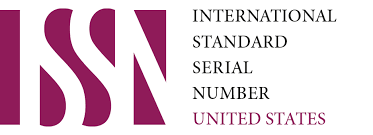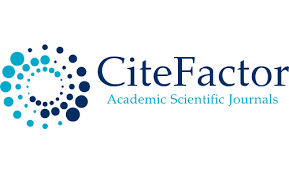Improving Oral Speech Competence Of Students
DOI:
https://doi.org/10.62480/jpip.2024.vol30.pp39-42Keywords:
Oral speech competence, Communication skills, Student developmentAbstract
This article explores strategies aimed at improving the oral speech competence of students. Effective oral communication skills are essential for academic success, professional development, and interpersonal interactions. Through a review of current research and best practices, this study examines various approaches to enhancing students' oral speech competence, including speech training programs, classroom activities, and technology integration. The article also discusses the importance of teacher training, peer collaboration, and feedback mechanisms in facilitating skill development. By implementing targeted interventions and fostering a supportive learning environment, educators can empower students to become confident and articulate communicators
References
National Association of Colleges and Employers. (2019). Job Outlook 2019. Retrieved from https://www.naceweb.org/talent-acquisition/candidate-selection/job-outlook-2019/
McCroskey, J. C., & McCroskey, L. L. (1988). Self-report as an approach to measuring communication competence. Communication Research Reports, 5(2), 108-113.
National Communication Association. (2016). Learning Outcomes in Communication. Retrieved from https://www.natcom.org/learning-outcomes-communication
Vygotsky, L. S. (1978). Mind in Society: The Development of Higher Psychological Processes. Harvard University Press.
Fass, A. (2003). Language arts. In M. Orey (Ed.), Emerging perspectives on learning, teaching, and technology. Retrieved from https://projects.coe.uga.edu/epltt/index.php?title=Language_Arts
Nelson, P. D., & Pearson, J. C. (2005). Evaluation of speech training for university students: A meta-analytic review of 30 studies. Communication Education, 54(4), 327-344.
Prince, M. (2004). Does active learning work? A review of the research. Journal of Engineering Education, 93(3), 223-231.
Bonwell, C. C., & Eison, J. A. (1991). Active learning: Creating excitement in the classroom (ASHE-ERIC Higher Education Report No. 1). Washington, DC: The George Washington University, School of Education and Human Development.
Warschauer, M. (1997). Computer-mediated collaborative learning: Theory and practice. Modern Language Journal, 81(4), 470-481.
Topping, K. (2005). Trends in peer learning. Educational Psychology, 25(6), 631-645.
Kamilla, A., & Akmalovna, A. G. (2023). TRENDS IN THE DEVELOPMENT OF TRADITIONAL AND MODERN ECOLOGICAL CULTURE OF THE UZBEK PEOPLE. Academia Science Repository, 4(6), 624-628.
Расулова, Н. Ф., Саттарова, З. Р., & Мирдадаева, Д. Д. (2022). ИЗУЧЕНИЯ ОСОБЕННОСТИ ЗДОРОВЬЕ СОХРАНЯЮЩЕГО ПОВЕДЕНИЯ И САМООЦЕНКА ЗДОРОВЬЯ СТУДЕНЧЕСКОЙ МОЛОДЕЖИ. ноябрь-декабрь, 105.
Асадова, Г. А. (2021). Актуальные проблемы бесплодия у женщин. In Recent Scientific Investigation (pp. 15-19).
Асадова, Г. А. (2021). Обоснование комплекса мер по преодолению бесплодия у женщин с использованием методов вспомогательных репродуктивных технологий. Интернаука, (24-1), 44-45.
Alidjanov, J. F., Khudaybergenov, U. A., Ayubov, B. A., Pilatz, A., Mohr, S., Münst, J. C., ... & Wagenlehner, F. M. (2021). Linguistic and clinical validation of the acute cystitis symptom score in German-speaking Swiss women with acute cystitis. International Urogynecology Journal, 32(12), 3275-3286.
Ataullaevich, K. U., Ataullaevich, A. F., Talatovich, M. A., & Khikmatovich, T. M. (2017). Studying of prevalence of the most significant urological diseases in the Aral Sea Area. European science review, (1-2), 140-145.
Ataullaevich, A. F., Mekhammadkabirhanovich, B. M., Khalilovich, M. D., Ataullaevich, K. U., & Samukdjanovich, K. S. (2018). Factors influencing the choice of a method for treating patients with urethral stricture. European science review, (9-10-2), 203-206.
Ataullaevich, A. F., Mekhammadkabirhanovich, B. M., Khalilovich, M. D., Ataullaevich, K. U., & Samukdjanovich, K. S. (2018). Assessment of the specific characteristics of urethral stricture according to records of Medical Republican institution of Uzbekistan. European science review, (9-10-2), 207-211.
Khudaybergenov, U. A., Kasimov, S. S., Abbosov, S. A., Shomarufov, A. B., & Abdukarimov, O. O. (2023). STUDYING OF PREVALENCE OF THE MOST SIGNIFICANT UROLOGICAL DISEASES IN THE ARAL SEA AREA. Academia Science Repository, 4(05), 199-206.
Downloads
Published
Issue
Section
License

This work is licensed under a Creative Commons Attribution-NonCommercial 4.0 International License.
User Rights
Under the Creative Commons Attribution-NonCommercial 4.0 International (CC-BY-NC), the author (s) and users are free to share (copy, distribute and transmit the contribution).
Rights of Authors
Authors retain the following rights:
1. Copyright and other proprietary rights relating to the article, such as patent rights,
2. the right to use the substance of the article in future works, including lectures and books,
3. the right to reproduce the article for own purposes, provided the copies are not offered for sale,
4. the right to self-archive the article.












